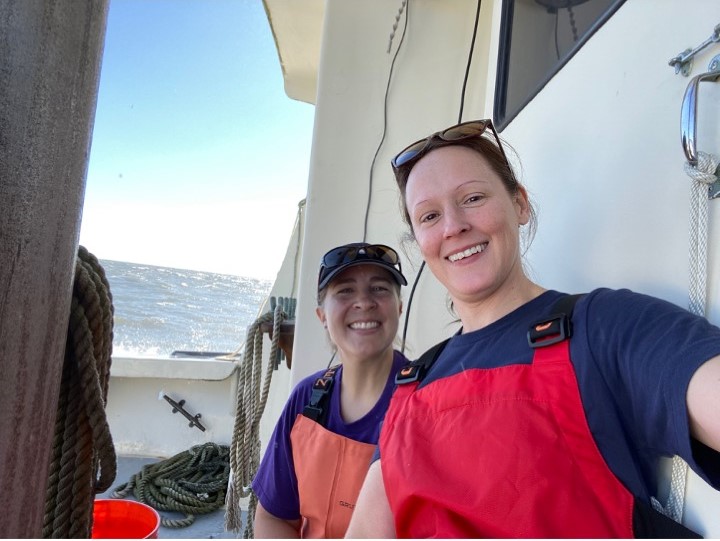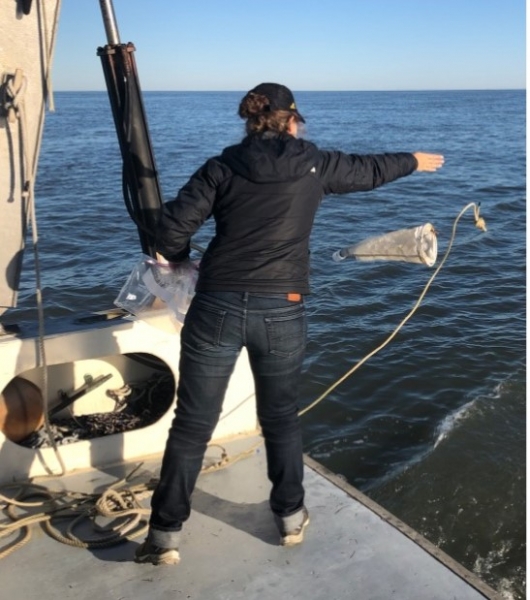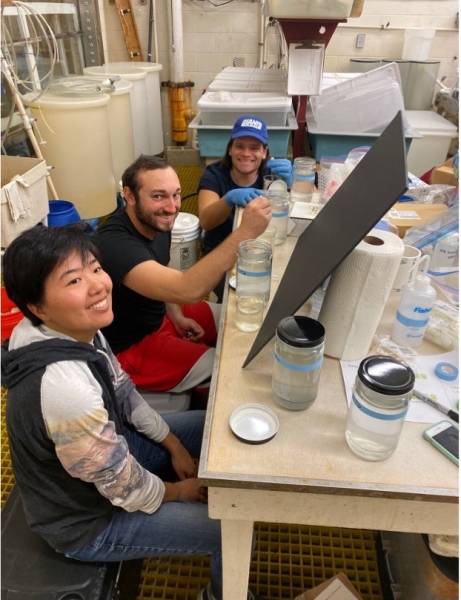Guest blog by: Dr. Robert Chant, Rutgers University
Microplastics in the ocean are a growing concern to both the scientific community and to the public at large. Much of the attention is focused on the garbage patches that can be found in oceanic gyres and are thousands of miles from their largely urban sources. However, the amount of microplastics is often significantly higher in urban waterways than in these remote garbage patches. Moreover, coastal and estuarine environments are extremely diverse and rich in wildlife, creating high potential for microplastic and animal interactions in these regions.
A team at Rutgers University, with support from a NOAA Marine Debris Program Research grant, is studying the fate and transport of microplastics as they flow from an urban estuary into the coastal ocean, with a focus on the boundary between fresher estuarine and more salty ocean waters. These boundaries, or “river plume fronts,” accumulate materials, such as microscopic larvae, phytoplankton, and other floatables where many marine species gather to feed. Because of these characteristics, river plume fronts are likely to be regions where microplastics enter the food chain.

The team’s efforts focus on the Delaware Bay plume where discharge from the highly urbanized Delaware River meets the coastal ocean. The project is studying the role that river plume fronts have on microplastics, including: 1) how microplastics enter the food chain and 2) the sinking of microplastics as they are released as waste by zooplankton, called fecal pellets. While most microplastics tend to float and remain near the surface, the fecal pellets of zooplankton can rapidly sink to the bottom. Our field efforts are focused on understanding the amount of microplastics and zooplanktons in the estuary, the plume front, and the ocean.

The project team includes physical oceanographer Bob Chant, marine biologist Grace Saba, water quality engineer Nicole Farhrenfeld, and a chemist Georgia Arbuckle-Keil. Together, they will combine field observations and laboratory experiments to assess the role that frontal processes have on the amount of microplastics, the incorporation of microplastics into the food chain, and how microplastics move through the water when they are released as waste by zooplankton. The field research involves mapping out the structure of the plume front with shipboard surveys. Sampling locations will be chosen in real-time aboard the ship based on the salinity of the water, and material from net tows will be analyzed for the amount of microplastics and zooplankton. Zooplankton fecal pellets will also be collected in the field and analyzed for microplastics. In addition, laboratory studies will include feeding microplastics to zooplankton to assess how microplastics impact the way their waste sinks. Finally, the results will be incorporated into a circulation model of the Delaware Bay and the coastal ocean that will show the effect of interactions between microplastics and living organisms in river plume fronts, ultimately determining the fate and transport of microplastics in the coastal and estuarine environment.

